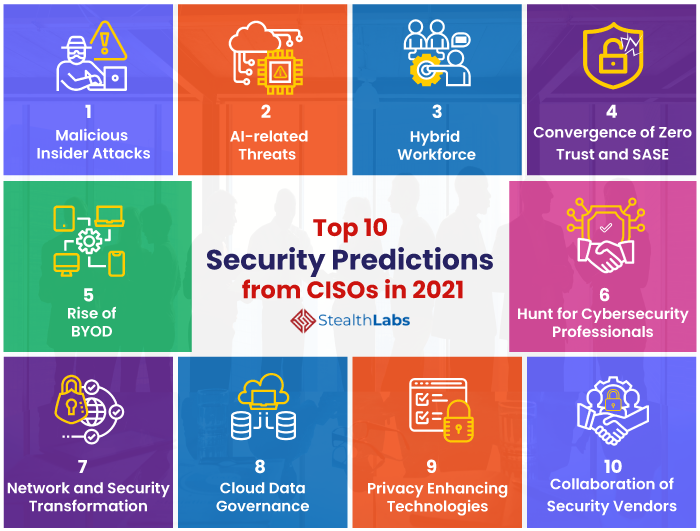Future-Proof Your Business: Secret Cybersecurity Forecasts You Need to Know
As companies face the speeding up rate of digital transformation, understanding the evolving landscape of cybersecurity is essential for long-term durability. Forecasts suggest a considerable uptick in AI-driven cyber hazards, alongside increased regulative analysis and the critical shift towards Zero Depend on Style. To effectively browse these difficulties, organizations need to reassess their safety and security techniques and foster a society of understanding among employees. However, the implications of these changes extend beyond mere conformity; they can redefine the extremely framework of your functional protection. What steps should companies take to not only adjust yet prosper in this brand-new atmosphere?
Surge of AI-Driven Cyber Hazards

Among one of the most concerning growths is using AI in producing deepfakes and phishing plans that are extremely persuading. Cybercriminals can make sound and video content, impersonating executives or trusted individuals, to control sufferers right into disclosing delicate details or accrediting fraudulent transactions. Additionally, AI-driven malware can adapt in real-time to evade detection by conventional protection measures.
Organizations must recognize the urgent requirement to boost their cybersecurity frameworks to deal with these progressing hazards. This includes investing in innovative hazard detection systems, promoting a society of cybersecurity recognition, and implementing robust occurrence response plans. As the landscape of cyber dangers transforms, positive actions become necessary for guarding sensitive data and preserving service stability in an increasingly digital globe.
Raised Concentrate On Data Privacy
Just how can organizations efficiently navigate the expanding emphasis on data personal privacy in today's digital landscape? As regulatory structures advance and customer expectations climb, organizations need to prioritize robust information personal privacy methods. This includes taking on detailed data administration plans that make sure the ethical handling of individual information. Organizations should carry out regular audits to examine compliance with guidelines such as GDPR and CCPA, identifying prospective susceptabilities that might bring about data violations.
Buying employee training is critical, as team understanding straight affects data protection. Organizations must promote a society of personal privacy, encouraging staff members to understand the significance of guarding delicate information. Additionally, leveraging technology to enhance information safety is essential. Applying sophisticated file encryption techniques and safe and secure data storage options can dramatically minimize threats related to unauthorized gain access to.
Cooperation with lawful and IT teams is important to align information personal privacy campaigns with service goals. Organizations ought to also engage with stakeholders, consisting of clients, to interact their commitment to information personal privacy transparently. By proactively resolving information personal privacy problems, services can develop count on and enhance their reputation, inevitably adding to long-lasting success in a significantly looked at electronic atmosphere.
The Change to Zero Trust Fund Style
In action to the developing hazard landscape, organizations are progressively embracing Zero Depend on Architecture (ZTA) as a basic cybersecurity technique. This strategy is based on the concept of "never ever depend on, constantly validate," which mandates continuous verification of user identities, devices, and information, no matter of their location within or outside the network boundary.
Transitioning to ZTA entails carrying out identity and gain access to administration (IAM) remedies, micro-segmentation, and least-privilege access controls. By granularly regulating access to sources, companies can mitigate the danger of expert threats and reduce the influence of exterior breaches. Moreover, ZTA incorporates robust monitoring and analytics abilities, permitting organizations to find and reply to anomalies in real-time.

The shift to ZTA is additionally fueled by the raising adoption of cloud solutions and remote job, which have increased the assault surface area (7 Cybersecurity Predictions for 2025). Typical perimeter-based protection designs want in this brand-new landscape, making ZTA a much more resistant and flexible structure
As cyber threats continue to expand in refinement, the fostering of Absolutely no Count on principles will be essential for organizations seeking to secure their properties and keep regulatory compliance while making sure business continuity in an unclear atmosphere.
Governing Modifications imminent

Upcoming laws are anticipated to deal with a variety of problems, including information personal privacy, breach alert, and occurrence feedback procedures. The General Data Security Guideline (GDPR) in Europe has actually established a criterion, and similar structures are arising in other areas, such as the United States with the recommended federal personal privacy laws. These guidelines typically enforce strict fines view it for non-compliance, emphasizing the requirement for companies to prioritize their cybersecurity procedures.
Moreover, sectors such as financing, medical care, and crucial framework are likely to deal with much more stringent demands, showing the sensitive nature of the information they handle. Conformity will not simply be a legal responsibility but a crucial part of building trust with consumers and stakeholders. Organizations must stay ahead of these modifications, integrating regulative needs into their cybersecurity approaches to guarantee strength and safeguard their basics properties efficiently.
Relevance of Cybersecurity Training
Why is cybersecurity training an important part of an organization's defense technique? In an era where cyber threats are increasingly sophisticated, organizations must identify that their workers are typically the very first line of protection. Reliable cybersecurity training equips staff with the expertise to recognize prospective risks, such as phishing attacks, malware, and social engineering strategies.
By fostering a culture of safety and security understanding, organizations can substantially minimize the risk of human mistake, which is a leading root cause of information breaches. Normal training sessions make sure that workers stay educated concerning the most recent hazards and finest techniques, consequently enhancing their capability to respond suitably to events.
Furthermore, cybersecurity training advertises compliance with governing requirements, lowering the risk of legal consequences and financial penalties. It likewise encourages workers to take possession of their duty in the organization's security structure, leading to an aggressive as opposed to reactive approach to cybersecurity.
Verdict
In final thought, the progressing landscape of cybersecurity needs aggressive procedures to resolve arising threats. The rise of AI-driven assaults, combined with increased information personal privacy problems and the change to Absolutely no Trust Design, requires a detailed strategy to protection. Organizations must remain alert in adapting to regulative modifications while prioritizing cybersecurity training for workers (cyber resilience). Emphasizing these Continued techniques will not only improve business strength but also secure delicate info against a progressively innovative variety of cyber dangers.